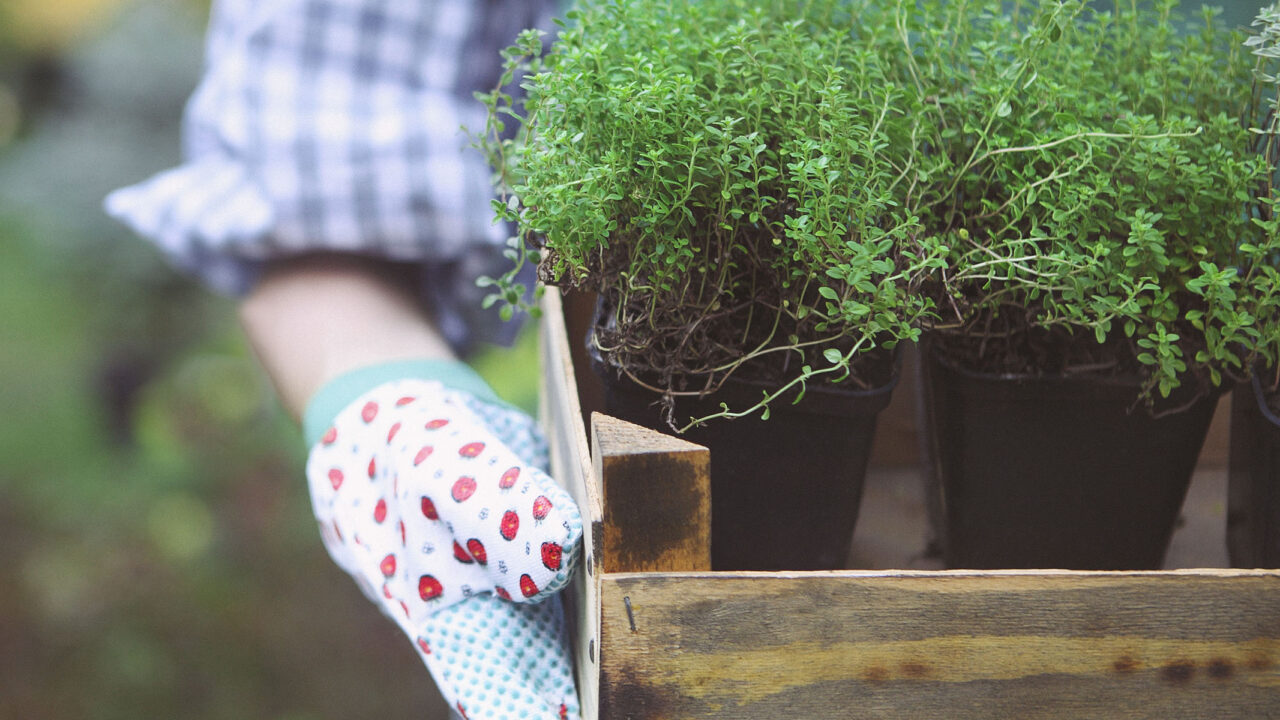This week I read several tweets from garden bloggers about planting container gardens for their Moms and it got me to thinking… What a wonderful way to express your creativity and make a truly unique gift. Container gardening is not without challenges in our Houston summers, but here are some basic tips that will help you design the perfect outdoor container garden.
Before You Start
First decide where you are going to place the container in the garden. Will it be in full sun, part-sun, or in shade? That will determine what type of plants you want to use. I’ve seen a lot of containers placed inside garden beds as a focal point. If you are planning to do this you’ll find a round concrete stepping stone makes a nice flat surface to place your pot on inside the bed. A pedestal works nicely too and provides added height so your container gets noticed.
Saucers are okay for tall planters where the roots will not get down that far, but use caution with smaller ones. You don’t want the roots to drown in standing water, especially deep saucers.
Bigger is Better
Choose a container that is larger that you think you’ll need. I say this because our summers are brutal here in Houston and yes, you will get tired of watering a container 2 or more times a day.
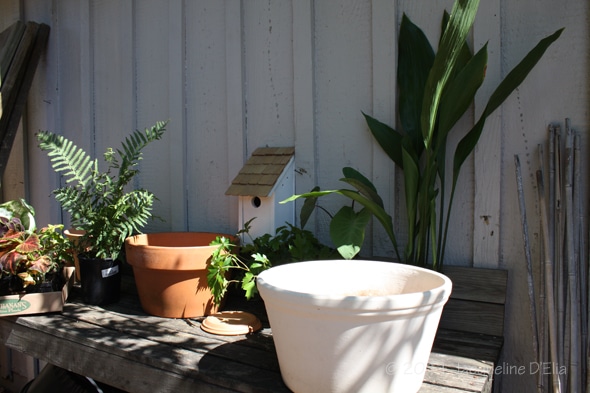
The water needs of the plants you select will help determine what kind of pot you need. Terra-cotta clay pots are natural and pretty, but they are porous and tend to dry out faster than ceramic glazed pots. Drought tolerant plants such as succulents do well in clay pots. Glazed pots offer a good balance of aesthetics and functionality. Plastic ones are another option, but it is best to avoid placing them in full sun as they tend to fade and breakdown quickly.
Thrillers, Fillers and Spillers Explained
As a general rule, place taller plants in the center of the pot and smaller ones around the sides. Try this simple and easy to remember technique of using thrillers, fillers and spillers. Thrillers are your focal point and usually the tallest plant. They’re bold, dramatic and an attention getter. Fillers are used around the base with color or texture. Spillers flow over the edge of the pot and cascade down. This softens the edge of the pot and creates a more graceful and natural look.
Soil Considerations
Use the right potting mix for your plant selection. If you are planting succulents, you’ll need sandy well draining mix whereas plants that love moisture will be quite happy in a rich medium of compost and humus. Fertilize as needed with a slow release organic fertilizer. Granules are easy to use and can be sprinkled around the soil if they need a mid-summer boost. Slow release is the key here. Remember, feed the soil not the plants!
Choose the right plants
RULE # 1 – Choose plants that have similar water, soil and light requirements. Avoid grouping plants that need full sun with shade loving plants.
RULE # 2 – Remember texture and leaf shapes can be just as important as color, especially when annuals fizzle out in the summer heat. Avoid using too many types of plants. Stick with no more than 3 to 4 as a general rule.
Get creative!
For my container garden, I needed plants that would do well in shade. I found two containers that were similar in size. I tried a few combinations until I found one that I liked. Any of these combinations would work just fine.
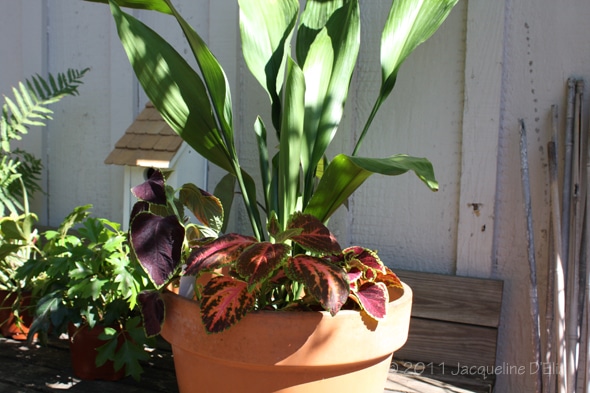
I decided to use the cream colored clay pot to give the arrangement a nice “pop”.
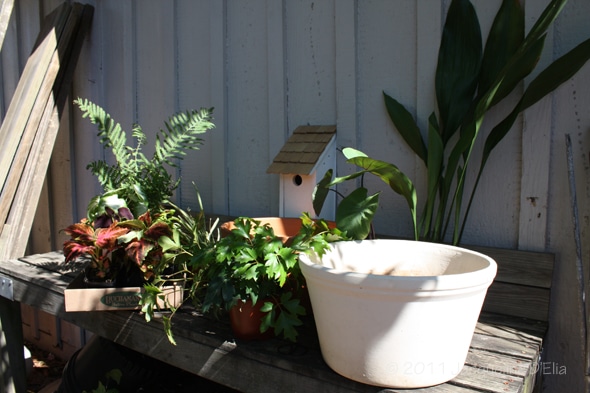
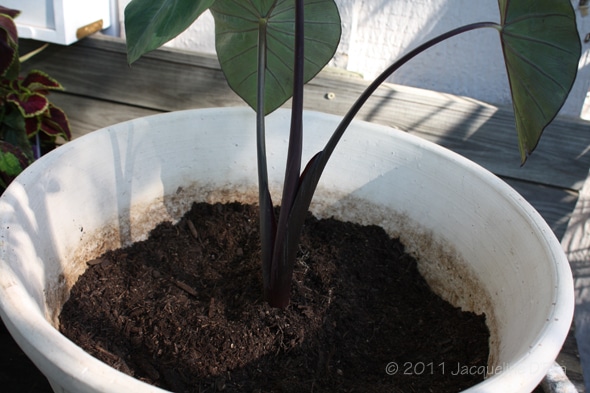
A few plants that would make good thrillers in shade are cast iron plant (Aspidistra elatior), Dracaena, tall spiky ferns, or caladiums. I selected several different varieties of coleus (Solenostemon spp.) as my filler plants. For my thriller I combined two plants, a small white caladium (Caladium spp.) and a taro (Colocasia spp.). While the taro may get too tall, the shade should keep it relatively compact. (We’ll see how it looks by August).
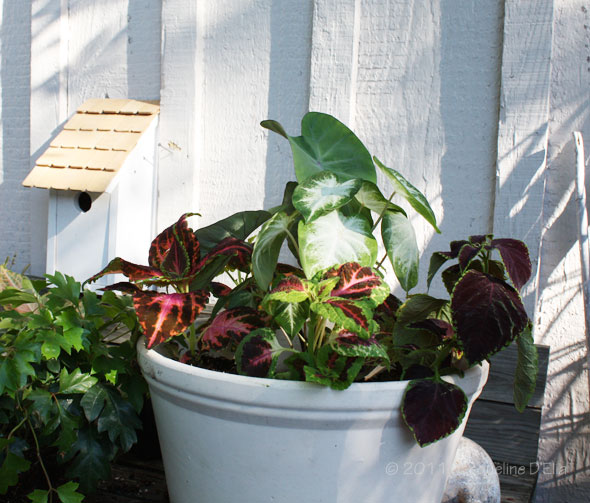
Grape ivy (Cissus rhombifolia) was selected for my spiller. I divided the ivy up so I would have enough to plant in several locations around the rim of the pot. I gently removed the plant from the pot and separated the plant into four sections, then gently pulled them apart in clumps. I tried to avoid damaging the root area around the stems as much as possible.
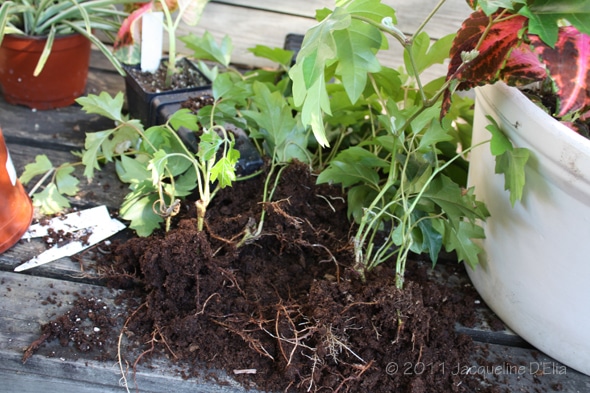
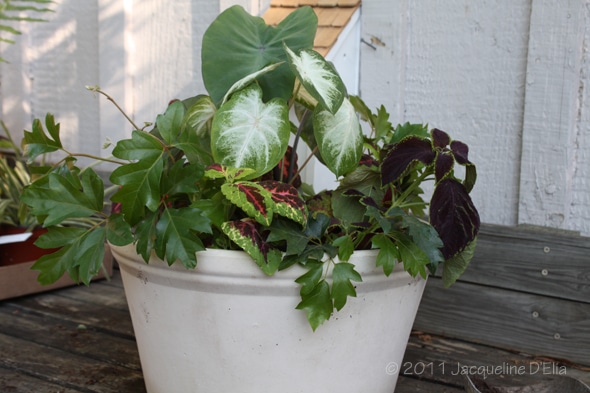
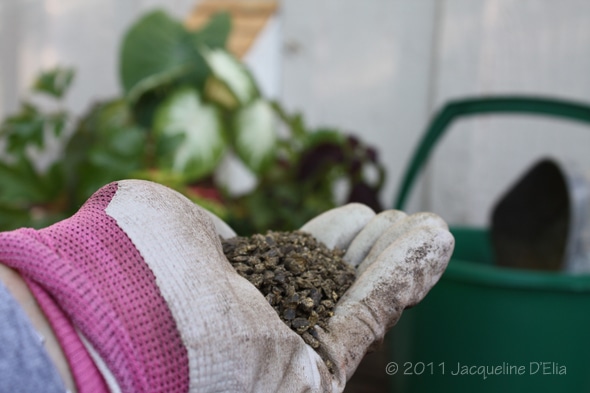

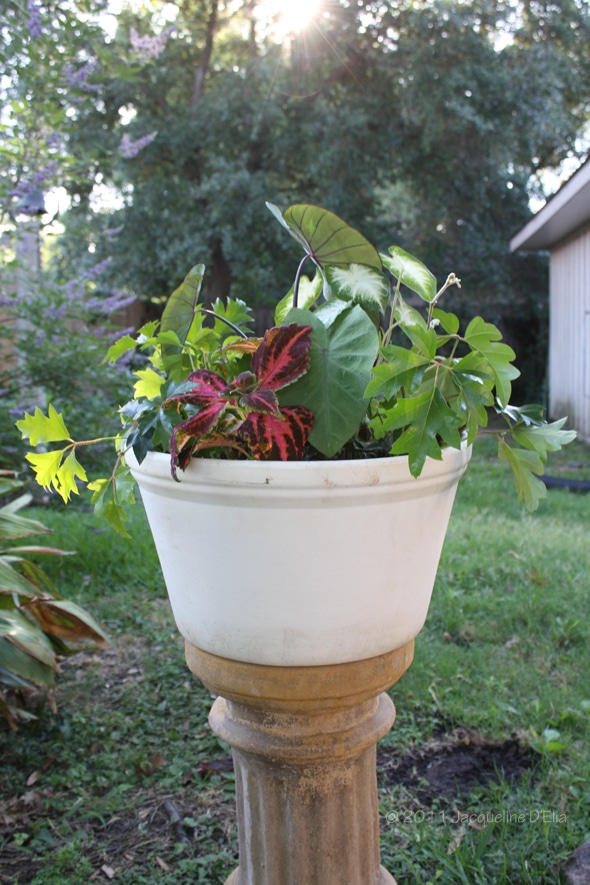
Avoid Container Clutter
A common mistake is planting too many containers the same size or using containers that are too small in scale. Grouping containers of various sizes in groups of three or five can produce a lovely vignette. Remember that your are decorating your outdoor rooms in a similar way to your indoor rooms. Sometimes too much is exactly that, too much. Fewer, larger containers are best.


Here is another example of using thrillers, fillers and spillers I saw at the River Oaks Garden Club.
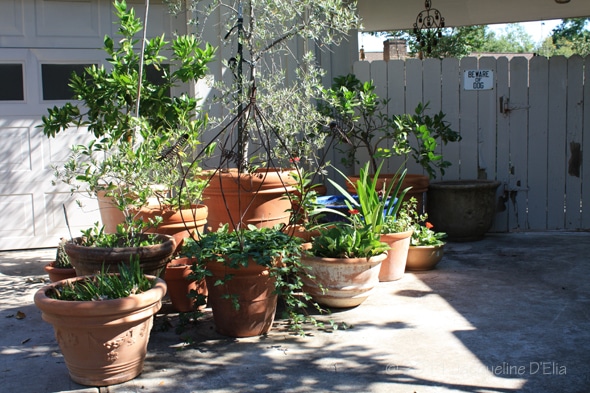
Here is an example of what NOT to do. Yes this is my driveway collection. While I have the tiered effect, I have too many containers. Nothing stands out. It looks messy. SO! I plan to follow my own advice this weekend and make some needed changes.
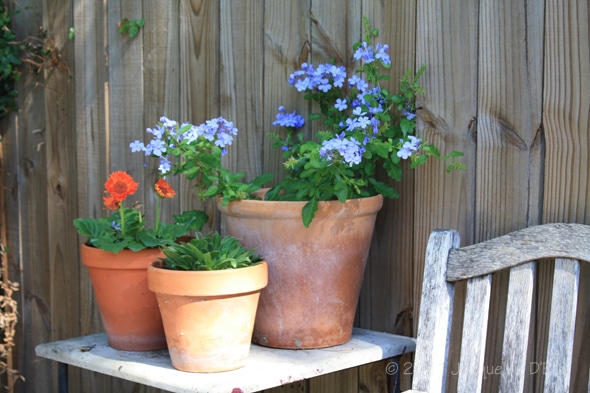
This arrangement of containers looks much better. Container gardening makes a landscape pop and creates a warm and inviting space. It brings your landscape garden closer to your home and ties everything together.
